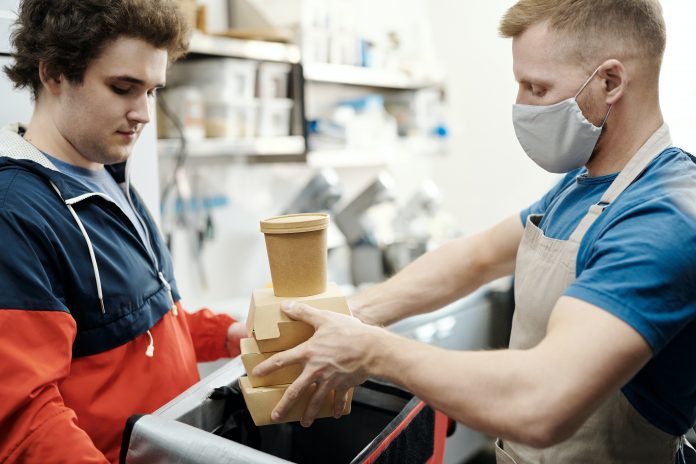Richard Cox, managing director of Langley Business Systems, gives an overview of the main ways hospitality businesses can maximise technology to navigate through the pandemic and ensure customers feel safe when visiting their premises
There is no denying that the COVID-19 pandemic has hit the hospitality industry hard and has meant many business owners have been forced to think on their feet to ensure they can continue to trade in a COVID-secure manner.
Technologies that might have originally been introduced as novelties or extra conveniences are suddenly becoming necessities in a world where some people are wary of entering hospitality premises.
From replacing tangible restaurant menus with scannable QR codes and online menus to introducing touchless payments, in-app ordering and online table-booking, almost every aspect of the hospitality industry experience can now be accessed through guests’ own mobile devices, as long as the business has adopted the correct software.
By maximising technology, the hospitality industry can open themselves to a wider customer base, including those who are more cautious of going out during this challenging time.
With this in mind, here is an overview of the main ways hospitality businesses can maximise technology to navigate through the pandemic and ensure customers feel safe when visiting their premises:
Contactless communication
Contactless communications can take a variety of different forms and can be utilised in the majority of hospitality spaces. For premises such as restaurants, bars and pubs, contactless communication tools, which can be implemented through an app or via the business’ website, allow customers to view menus, order and even pay via their own mobile device, limiting the need for server interaction.
Not only does this technology make customers feel safe as they are engaging in less face-to-face contact, but it also means that the business does not have to ensure menus and card machines are cleaned after each usage, cutting back on the cost of cleaning products needed, as well as ensuring there are fewer touch-points that can spread the virus.
In addition, contactless ordering cuts out the process of having to enter orders into the EPOS system via a till followed by the delivery of a ticket to the kitchen for food to be prepared by automating the entire process. Aside from reducing contact between staff, this dramatically increases operational efficiencies and improves customer service as a result.
Optimising your business for delivery/collection
When the national lockdown was initially introduced in March 2020, hospitality businesses were forced to close and were only able to operate through a takeaway delivery and collection service. During this time, deliveries and collection were the only form of income many businesses could somewhat profit from, so it was important for establishments to ensure they were conducting themselves in a safe and efficient manner, especially as staffing had to be reduced dramatically for social distancing.
This, in turn, saw the dramatic growth in the usage of delivery and collection apps, especially as more and more businesses launched takeaway as a new service. By investing in and implementing new technologies, businesses were able to control and keep track of incoming orders, whilst maximising the opportunity for increased revenue when they would otherwise be forced to close.
As the hospitality industry faces increased Government restrictions, investing in the technology to quickly launch a takeaway delivery and collection service is, therefore, a guaranteed way that pubs, bars and restaurants can secure future income and is something every establishment should consider.
Handheld ordering
Handheld ordering devices aren’t necessarily new, but their popularity has increased significantly since the outbreak of COVID-19.
This technology is perfect for businesses who do not want to sacrifice customer interaction but want to ensure they are doing it in COVID-secure manner. Again, this technology cuts out entering orders into one central EPOS system, meaning servers can be allocated their own handheld device per shift, reducing the need to touch multiple surfaces when taking orders.
Not only do handheld ordering technologies speed up service, but they can help reduce errors and increase sales, which are all vital for generating additional revenue after the hardship the industry has felt during 2020.
Improved EPOS systems
Throughout the pandemic, EPOS integration systems have been improved and updated to aid businesses in the industry and to meet their changing needs. For example, delivery and takeaway modules can be installed for businesses who may need to switch to a takeaway service to adhere to local or national restrictions.
These new integrations mean all orders can easily be accounted for, allowing businesses to run on a skeleton body of staff if they need to quickly cut costs. It also enables businesses to increase operational efficiencies, improving customer service and ensuring quality food is delivered on time.
EPOS systems can also be integrated with handheld ordering devices and apps to work as an overall system that allows business owners to get a full view of spend trends and patterns, whilst being able to control costs in regards to stock, wastage, rotas and forecasting. Using such technologies can help bottom-line profit and cashflow back into the business, which is incredibly important for hospitality businesses in navigating the COVID-19 pandemic.
Overall, the optimisation of technology to keep staff and customers safe and to provide real-time business intelligence is something every business should consider as we continue the battle against COVID-19. Not only does it enable hospitality businesses to make fast and informed decisions, but the technology also increases efficiencies and improves customer service as a result; therefore, establishing a loyal customer base which will be vital for financial recovery both during and post-pandemic.











